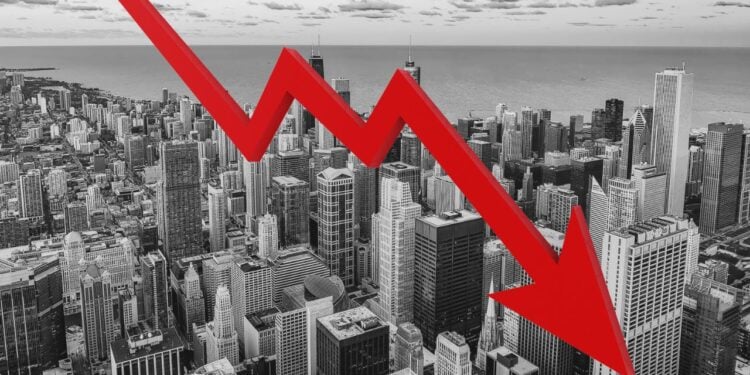From 2019 through 2023, downtown office values in the United States have fallen by $557 billion in central business districts (CBDs) across the U.S.
Bloomberg reports that central business districts within large metro areas have faced the majority of the commercial office downturn in recent years, seeing a 52% drop in office real estate values since their peak pre-pandemic levels. Meanwhile, office spaces in other districts and suburban neighborhoods generally tend to fare better.
CBDs in large U.S. cities including San Francisco, Manhattan, Chicago, and Washington D.C. are experiencing dramatic downturns. The rise of flexible work environments combined with public safety concerns and local politics are all cited as factors feeding into plummeting CRE values.
The crisis presents challenges for landlords and bankers, but also opportunities for urban planners and developers. Over the past year there has been an emerging trend of office conversions to create more housing. Developers and investors are hoping to transform properties within CBDs into mixed-use communities commonly referred to as the 15-minute city.
A big factor driving regional banks to take precautions is the ongoing struggle of the office loan sector, which has been particularly hurt in the post-pandemic economy. The rise of remote work environments has left many office buildings vacant, feeding fears of massive mortgage defaults.
Crain’s New York Business reports that nearly $1 trillion in troubled office loans is expected to accumulate by the end of this year — and the impending financial challenges could send shockwaves throughout the U.S. economy.
While current market conditions present severe challenges, they also pave the way for new movements and innovations in urban development that would impact the workforce, which could cut down on commute times while benefiting eco-friendly developments in the process.


 Dr. Gleb Tsipursky – The Office Whisperer
Dr. Gleb Tsipursky – The Office Whisperer Nirit Cohen – WorkFutures
Nirit Cohen – WorkFutures Angela Howard – Culture Expert
Angela Howard – Culture Expert Drew Jones – Design & Innovation
Drew Jones – Design & Innovation Jonathan Price – CRE & Flex Expert
Jonathan Price – CRE & Flex Expert











